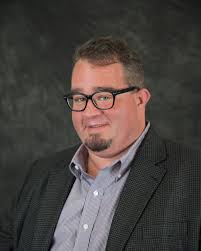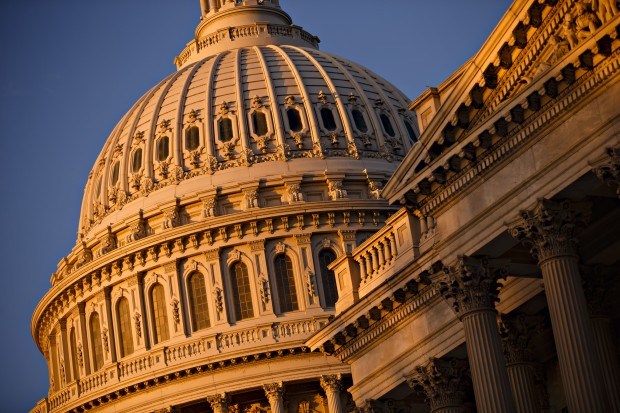Can insurers help “bend pandemic risk curves” for future events? Or is the goal of any government-insurance industry partnership program simply to replace some of the economic losses of businesses, putting them “into induced comas” during pandemics?
That was essence of one of the debates that emerged yesterday during a Congressional Virtual Hearing—”Insuring against a Pandemic: Challenges and Solutions for Policyholders and Insurers“—convened to discuss the role of the insurance industry and the federal government in covering pandemic-related losses of small businesses for future pandemics.
During the hearing, which took place five months later than originally planned, according to Rep. William Lacy Clay, D-Mo., Chairman of the House Financial Services Subcommittee on Housing, Community Development and Insurance, insurance industry representatives and lawmakers also debated whether it was too early for them to propose solutions at all.
John Doyle, President and Chief Executive Officer, Marsh, the first industry speaker to testify, weighed in on the side of prompt action and in support of risk-based programs that incentivize risk mitigation for future events. “Although some have suggested that Congress should delay until the current pandemic is over, we feel there are compelling reasons to act now,” he said, after thanking Rep. Carolyn Maloney, D-NY, for her role in sponsoring one of the risk-based programs being considered, the Pandemic Risk Insurance Act (H.R. 7011), a federal government reinsurance backstop modeled after the Terrorism Risk Insurance Act.
Later testifiers and some of the lawmakers would go on to highlight PRIA flaws, including the voluntary nature of the plan that would impact take-up rates, insurer participation and affordability. Doyle, however, focused his remarks on the need for speed and risk incentives.
“If we start now, with time and the right solution, we can bend the risk curve for future pandemics,” he said. “Insurance creates the right economic incentives to drive change in society. Moving quickly will help us to harness risk management and to build a more resilient U.S. economy,” he said.
“Taking action now will provide financial protection against future pandemics, in part, by absorbing some of the pandemic’s initial financial shock,” he added.

“If we start now, with time and the right solution, we can bend the risk curve for future pandemics.
John Doyle, Marsh
Offering another reason to get a public-private pandemic risk insurance plan ironed out now, Doyle said that acting now will “accelerate the economic recovery by reducing uncertainty. Moving forward, he speculated that the “capital markets will seek assurance that companies have protection against prospective pandemic risk.” That means, “the pace of recovery will depend on the nature and degree of confidence in the marketplace,” he said.
R.J. Lehmann, Editor-in-Chief and Senior Fellow of the International Center for Law and Economics and Co-Founder of R Street Insitute, urged everyone to slow down. Lehmann, who consulted with the major insurance industry trade groups a revenue replacement assistance plan—the Business Continuity Protection Program (BCPP) unveiled by the American Property Casualty Insurance Association, the National Association of Mutual Insurance Companies and the Independent Insurance Agents & Brokers of America in May—noted that one aspect of the plan that he suggested doesn’t seem reasonable just six months later. “A three-month benefit cap was my idea back in April. That seemed generous. It doesn’t look like that now,” he said.
Likewise, he noted that PRIA was originally drafted as a $500 billion program. “It’s now a $750 billion program. Not only is that clearly not enough but giving that it is structured as one pot of money if it were in place during COVID it would all have been eaten up by New York before we got to the second wave or the third wave,” he said.
“Don’t legislate for the next pandemic while we’re in the midst of the current one,” he told the government representatives attending the hearing. “Ad hoc solutions might be as good as it gets. Get help to the businesses, workers and communities who need it right now,” Lehmann said.
Lehman also took issue with the idea of a risk-based program. “The best argument for a public-private partnership is that insurers can help policyholders to mitigate risk. But it’s important to ask mitigate the risk of what?” he said. “It’s not the risk that a business is unsafe,” he said, contrasting business interruption and liability insurance lines where pricing signals can help to mitigate risk. On the liability side, “the risk you’d be trying to reduce is the risk that a business will shut down. But in a pandemic, we want businesses to shut down.
“We want them to have a safety net so that they can shut down and survive and not lobby to lift lockdown orders—because that’s how you get the situation where schools are closed but bars and gyms are open,” Lehmann said.
He continued: “Speaking as someone who has long preached the gospel of risk-based insurance, I am telling you that you do not want this to be a risk-based program. A risk-based program would mean that tech firms that can work remotely would pay the least but restaurants, theaters and churches would pay the most. I don’t think that’s the outcome you want,” he said.
Lehmann had some other observations about the way business interruption works to share with lawmakers, noting that while the BCPP specifies that money doled out under that proposed plan can only be used for items like payroll and rent, “that’s not how business interruption [insurance] usually works. A business can have an interruption claim and at the same time layoff all its employees,” he said.
Reacting to that insight, a lawmaker later asked how typical that scenario is—having a business file a BI claim and then layoff staff.
“That wouldn’t be unusual. [It’s] going to depend on the contract between the insurer and the insured,” Lehmann said, noting that the insurance contract could spell out that it’s insuring payroll. “The government is not involved in that process. And PRIA doesn’t propose anything that would limit that from happening,” he said.
Asked about the impact such layoffs would have on the economy, Lehmann said, “Generally speaking, what we care about are these relationships—relationships between employers and employees, businesses and customers.”
“The whole goal of PPP was to put all of these businesses into like an induced coma, so that we could tackle the virus, [and] then bring them back and hope everything comes back to normal,” he said, referring to COVID-19 relief loans of the federal government’s Payment Protection Program.

“We want them to have a safety net so that they can shut down and survive and not lobby to lift lockdown orders—because that’s how you get the situation where schools are closed but bars and gyms are open.”
R.J. Lehmann
Doyle took the opportunity to call out that choice of words several times as he responded to questions from lawmakers, including Maloney who asked the Marsh executive to about the insurability of pandemics. Maloney noted that programs like PRIA and one proposed by Chubb, which combines a risk-based program for larger business and a BCPP-like program for small businesses, center on the idea that pandemic risk is insurable with an appropriate federal backstop. Yet some hearing speakers said that pandemic risk is totally not insurable, she said, asking Doyle to explain.
After explaining that the global and undiversifiable nature of a pandemic makes the economic consequences of a pandemic “too severe and beyond the risk-bearing capacity of insurers to ultimately bear,” Doyle said Marsh agreed with the view of Chubb’s CEO Evan Greenberg that the industry still has a big role to play nonetheless. “With all due respect, shutting down businesses or putting businesses into a coma is not an ideal future state. We ought to be looking to ultimately change the outcome of the next pandemic,” Doyle said.
Maloney went on to quote some remarks she read attributed to Greenberg, stating that the “industry does have wherewithal to take risk here” and that it is “a mistake for insurers to think they could not insure this risk at all,” asking Michelle McLaughlin, Chief Underwriting Officer, Small Business & Commercial Middle Market for Chubb to explain.
“Chubb believes it is very important for the industry to participate in the solution by playing a risk-bearing role because of the industry’s knowledge and experience can help drive better behaviors,” McLaughlin said. “We really believe the industry needs to have some skin the game here. Our involvement in a public-private partnership with the federal government would lead to a better understanding of pandemic risk and incentivize improved risk mitigation and preparedness,” she said, adding that a program that “commit insurance industry capital also provides an opportunity for increased risk-sharing over time as direct and secondary markets develop,” thereby reducing the government’s future financial burden.
Demand for Coverage
At one point during the hearing, when lawmakers were questioning industry representatives about similarities between pandemic and terrorism risk to better understand the applicability of a TRIA-like model for pandemics, Lehmann contradicted Doyle’s assertion that capital markets are going to seek assurance that businesses have protection against prospective pandemic risk going forward. The lawmakers were remembering a time following 9/11 when lenders reacted to carriers put terrorism exclusions on policies.
“That’s not the situation here,” Lehmann said. “I don’t imagine lenders are going to ask for an insurance product that does not exist.”
“To your knowledge, is there a market demand [created] by bank loan covenants ” that should push the government to providing pandemic coverage at a national level,” one lawmaker asked Lehmann directly. “I have heard anecdotal chatter that that may be a thing lenders looking at but I know of no evidence that it’s a common requirement. It would seem very unlikely for banks to require something that doesn’t exist. It would mean they would make no loans,” he said, explaining that terrorism coverage disappeared after 9/11. “So lenders had that security before and they lost it. We didn’t have pandemic coverage before COVID and we don’t have it now,” Lehmann said, highlighting the difference.

R.J. Lehmann, R Street
Industry representatives offered no guesses.
“It’s hard for me to evaluate proposals to cover future pandemics when no one knows what those premiums might be,” said Rep. Cindy Axne, D-Iowa.
Trey Hollingsworth, R-Ind., was critical of the whole concept of having a subcommittee hearing and all the ideas proposeds. Looking into the future, he speculated that even with a program in place, Congress won’t give recoveries to only to businesses that pay into a program, leaving suffering neighbor businesses that didn’t pay in out in the cold. “The inclination of future Congresses will be to pay everybody, to give everybody a recovery to help spur the economy along. And then no one buy that insurance next round because they’re recognize that everyone got the same payment whether they paid into the program or not.”
“So, I think this whole hearing is about a lot of bad ideas masked under good economic policy, masked under insurance but [they] aren’t actually either,” Hollingworth said.
Others testifying at yesterday’s hearing were Ann Cantrell, Owner, Annie’s Blue Ribbon General Store, on behalf of the National Retail Federation and Brian Kuhlmann, Senior Corporate Counsel, Shelter Insurance Company, on behalf of APCIA and NAMIC.





















 Why ‘Good Enough’ Is Killing Insurance: The Hidden Cost of Satisficing
Why ‘Good Enough’ Is Killing Insurance: The Hidden Cost of Satisficing  First Atlantic Hurricane Forecast for 2026 Suggests Season Close to 30-Year Norm
First Atlantic Hurricane Forecast for 2026 Suggests Season Close to 30-Year Norm  Artificial Intelligence Is Rewriting the Rules for Commercial Lines
Artificial Intelligence Is Rewriting the Rules for Commercial Lines  Five AI Trends Reshaping Insurance in 2026
Five AI Trends Reshaping Insurance in 2026 




